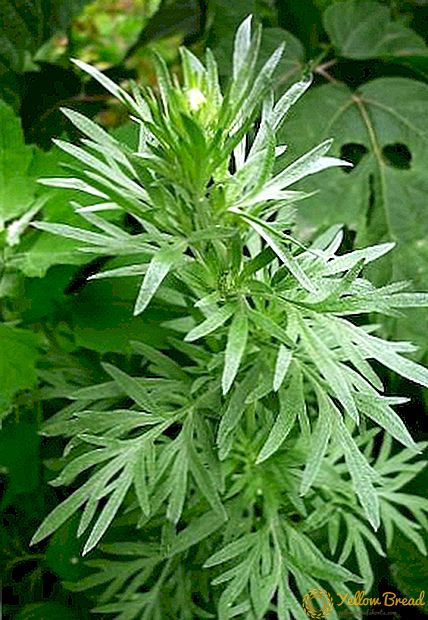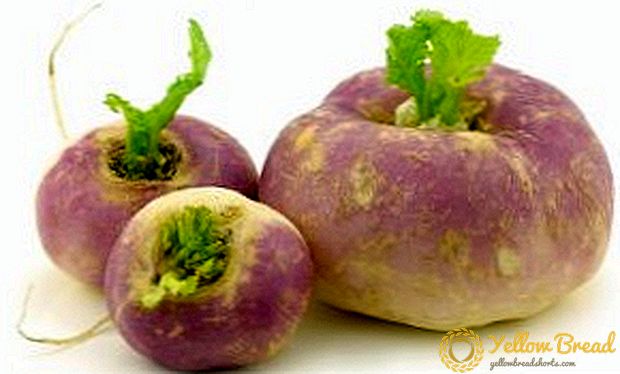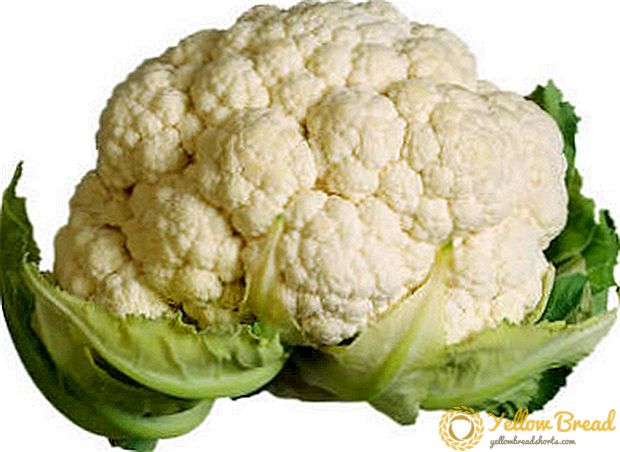 The garden portulak is a famous plant that is grown for culinary and medicinal purposes, especially popular in the East.
The garden portulak is a famous plant that is grown for culinary and medicinal purposes, especially popular in the East.
Another commonly used name for portulace garden is dandur.
The homeland of the plant is not known for sure, it is considered that this is India. Portulaca grows wild in Ukraine, in Russia and in the countries of Central Asia. Cultivated almost everywhere: throughout Europe, in Australia, in the Middle East and in China. Portulaca gardening is highly valued due to its beneficial and nourishing properties.
- Garden purslane: description
- Plantula seed placement in open ground
- When to sow seeds
- Choosing a place for landing
- Portulaca Sowing
- Growing garden purslane through seedlings
- Caring for garden purslane
- Collecting and using portulaca greens
- Medicinal properties of garden purslane
Garden purslane: description
Garden purslane - This plant is of the portulacaceous family, which reaches a height of no more than 30 cm. It has a creeping reddish stem, small fleshy scaphoid leaves and yellow small inflorescences, collected in bunches.The portulaca fruit is an egg-shaped seed boll, where small black seeds ripen. The plant blooms in June-August, the seeds ripen in September.
 Young leaves and shoots of portulaca contain many alkaloids, glycosides, vitamins C, E, K, PP, minerals, carbohydrates, proteins, organic acids, as well as important macro- and microelements such as iron, calcium, magnesium, manganese, sodium and zinc.
Young leaves and shoots of portulaca contain many alkaloids, glycosides, vitamins C, E, K, PP, minerals, carbohydrates, proteins, organic acids, as well as important macro- and microelements such as iron, calcium, magnesium, manganese, sodium and zinc.In addition to everything else, norepinephrine and dopamine are found in the leaves of the plant. Seeds contain unsaturated fatty acids: linoleic, oleic, palmitic, as well as starch and cellulose.
Young shoots and leaves are consumed raw and boiled, added to soups and salads, stewed and fried. In Australia, portulaca seeds are fried and eaten, like we have sunflower seeds. Purslane is also grown in flower beds for decorative purposes. In medicine, shoots, leaves and seeds of the plant are used. 
Plantula seed placement in open ground
Cultivation of purslane from seeds is possible in almost any household plot, subject to a few simple principles.
When to sow seeds
Since the gentle shoots of the plant do not tolerate spring frosts and require a lot of light, only when the soil warms up sufficiently, the purslane can be planted in open ground. This usually occurs between the end of May and mid-June, depending on the climate zone.
Choosing a place for landing
Portulac loves sunny places and blooms only in conditions of sufficient light. Place for planting should not be low, the plant does not tolerate stagnant water. It grows well in wet sandy places, but easily tolerates drought. Before planting a crop, it is important to determine on which soil the purslane grows best, based on the objectives of planting.
So, for cultivation of dense and nutritious green deciduous weight in the culinary purposes well fertilized soil will be required. However, this will cause damage to flowering and seed ripening - on fertile soils it will be scarce. Vegetable predecessors for portulaca will be good predecessors for which fertilizers were previously applied. Does not like peat soils. 
Portulaca Sowing
Garden purslane is distinguished by rather simple agrotechnics; its cultivation from seeds does not require complicated measures. The seeds of the plants are very small, so they need to be sown on the surface, deepening by 0.5 - 1 cm.The top layer of soil is best mixed with sand. Sow the seeds in small grooves, with respect to the distance between rows of about 50 cm. It is not recommended to make fertilizers before and during planting.
Growing garden purslane through seedlings
You can grow purslane garden and seedlings. Then in late March - early April, seeds are sown on the ground surface in transplanting containers. A layer of fine gravel drainage is placed on the bottom of the landing tank. The land for planting purslane should be mixed with sand in equal parts, in order to avoid the death of seedlings from the black leg.
Landings covered with glass and provide a temperature of at least 20 ° C. When 2-3 leaves appear on the seedlings, they are thinned, and the top layer of soil is sprinkled with sand. We can not allow stagnation of moisture in the soil, it causes root rot and rotting of young shoots. To prevent the development of rot can be treated planting fungicides containing copper.  A little later, another thinning or transfer of part of the seedlings to another container will be required. The sprouted seedlings are planted in June, when the risk of spring frosts will pass and at least 10 leaves will appear on the seedlings.Since this is a creeping plant, in order to properly set a purslane on seedlings, it is necessary to maintain a distance between seedlings of at least 25-30 cm.
A little later, another thinning or transfer of part of the seedlings to another container will be required. The sprouted seedlings are planted in June, when the risk of spring frosts will pass and at least 10 leaves will appear on the seedlings.Since this is a creeping plant, in order to properly set a purslane on seedlings, it is necessary to maintain a distance between seedlings of at least 25-30 cm.
Before planting, about a week and a half or two, it will not be out of place to temper the seedlings. Containers with plants should be brought out into the street during the daytime and left, gradually increasing the hardening time from 10 minutes to several hours.
Caring for garden purslane
Good illumination is the only fundamental condition for how to grow a garden purslane of good quality. The rest of the plant is not capricious. It should be watered moderately, it tolerates drought well.  With insufficient watering, the stems will be thin and unfit for human consumption. With excessive watering, the plant may not bloom, or bloom very late, ripening deteriorates. For the same reason, fertilization is highly undesirable. If the purslane is planted after vegetable crops, then the supply of nutrients will be sufficient. It is necessary to periodically loosen the soil and weed from the weeds.
With insufficient watering, the stems will be thin and unfit for human consumption. With excessive watering, the plant may not bloom, or bloom very late, ripening deteriorates. For the same reason, fertilization is highly undesirable. If the purslane is planted after vegetable crops, then the supply of nutrients will be sufficient. It is necessary to periodically loosen the soil and weed from the weeds.
Collecting and using portulaca greens
The purslane growing on a home bed can be eaten after a month after the emergence of mass shoots. Before the plant begins to bloom, it is completely cut off along with the leaves. To get portulac seeds, you need to leave a few plants until September, without breaking off their leaves and shoots. After cutting the plants grow, which makes it possible to re-and sometimes the third harvest, depending on climatic conditions.
 Like all lettuce, purslank is not stored for long, it warms in the heat and low humidity. At the same time, the content of vitamin C drops sharply. The product is stored for about 7-10 days at a temperature of 0 ° C and a relative humidity of about 95-97%. For culinary purposes portulac is used in various salads, soups, added to meat, fish and vegetable dishes. Young portulaca greens are salted, canned or marinated. Also, the plant can be used as a seasoning and insist on wine - it turns out a vitamin drink.
Like all lettuce, purslank is not stored for long, it warms in the heat and low humidity. At the same time, the content of vitamin C drops sharply. The product is stored for about 7-10 days at a temperature of 0 ° C and a relative humidity of about 95-97%. For culinary purposes portulac is used in various salads, soups, added to meat, fish and vegetable dishes. Young portulaca greens are salted, canned or marinated. Also, the plant can be used as a seasoning and insist on wine - it turns out a vitamin drink.
Medicinal properties of garden purslane
Garden purslane is very popular in eastern countries, where it is considered a "blessed" plant, because it is an effective prophylactic against various diseases. Useful qualities are explained by the rich chemical composition of purslane. The leaves contain carotenoids that synthesize vitamin A in the body, which is responsible for the skin and organs of vision. The presence of vitamin C and nicotinic acid helps strengthen the immune system.
 In folk medicine, the purslane garden is widely used for various diseases.Dried and ground seeds with honey are used in the treatment of bronchial asthma. Tinctures and decoctions of portulac leaves and stems are used for gallstone disease, kidney and bladder diseases, diabetes mellitus and colds fever. Pounded leaves are used as compresses for treating wounds, burns and insect bites.
In folk medicine, the purslane garden is widely used for various diseases.Dried and ground seeds with honey are used in the treatment of bronchial asthma. Tinctures and decoctions of portulac leaves and stems are used for gallstone disease, kidney and bladder diseases, diabetes mellitus and colds fever. Pounded leaves are used as compresses for treating wounds, burns and insect bites.Leaves and shoots of plants can be used for eye diseases. From the purslane seeds prepare an ointment that helps with psoriasis and neurodermatitis. Systematic use of portulac leaf lettuce reduces blood cholesterol and helps prevent the formation of atherosclerotic plaques.
There are also contraindications to the use of purslane for medicinal purposes. You can not use it to those who suffer from hypertension and bradycardia. Contraindicated in people with increased convulsive activity and patients with a tendency to diencephalic crises. It should also be taken into account that purslane stimulates the release of insulin and causes hypoglycemia, which can cause poor health and even fainting in people with low hemoglobin.






